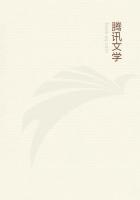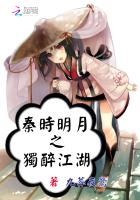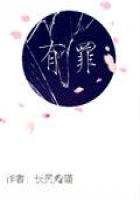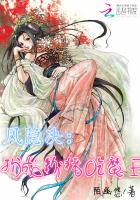THE ORIGIN OF INK--COMPOSITION OF THE COLOREDINKS OF ANTIQUITY--ANCIENT NAMES FOR BLACK INKS--METHODS OF THEIR MANUFACTURE--THE INVENTIONOF "INDIAN" INK--THE ART OF DYEING HISTORICALLY CONSIDERED--THE SYMBOLIC ESTIMATIONOF COLORS--THE EMPLOYMENT OF TINCTURES AS INKS--CONSIDERATION OF THE ANTIQUITY OF ARTIFICIAL INKS AND THE BLACK INKS OF INTERMEDIATETIMES--ORIGIN OF THE COLORED PIGMENTS OF ANTIQUITY-CITATIONS FROM HERODOTUS, PLINY AND ARBUTHNOT--PRICES CURRENT, OF ANCIENTINKS AND COLORS--WHY THE NATURAL INKS FORMERLY EMPLOYED ARE NOT STILL EXTANT--THE KIND OF INK EMPLOYED BY THE PRIESTS IN THE TIME OF MOSES--ILLUSTRATIVE HISTORY OF THE EGYPTIANS IN ITS RELATIONSHIP TO WRITING IMPLEMENTS--THE USE OF BOTH RED AND BLACK INKIN JOSEPH'S TIME--ITS OTHER HISTORY PRECEDINGTHE DEPARTURE OF ISRAEL FROM EGYPT--THE DISAPPEARANCE OF ALL BUT A FEW KINDS OF INK--INK TRADITIONS AND THEIR VALUE--STORY ABOUT THE ORACLES OF THE SIBYLS--HOW THE ANCIENTHISTORIANS SOUGHT TO BE MISLEADING--ILLUSTRATIVEANECDOTE BY RICHARDSON:
THE origin of Ink belongs to an era following the invention of writing. When the development of that art had advanced beyond the age of stone inscription or clay tablet, some material for marking with the reed and the brush was necessary. It was not difficult to obtain black or colored mixtures for this purpose.
With their advent, forty centuries or more ago, begins the genesis of ink.
The colored inks of antiquity included the use of a variety of dyes and pigmentary colors, typical of those employed in the ancient art of dyeing, in which the Egyptians excelled and still thought by many to be one of the lost arts. The Bible and alleged contemporary and later literature make frequent mention of black and many colors of brilliant hues.
In tracing the arts of handwriting and dyeing, some definite facts are to be predicated as to the most remote history of ink.
The Hebrew word for ink is deyo, so called from its blackness. As primitively prepared for ritualistic purposes and for a continuing period of more than two thousand years, it was a ****** mixture of powdered charcoal or soot with water, to which gum was sometimes added.
The Arabian methods of ****** ink (alchiber) were more complex. Lampblack was first made by the burning of oil, tar or rosin, which was then commingled with gum and honey and pressed into small wafers or cakes, to which water could be added when wanted for use.
About 1200 years before the Christian era, the Chinese perfected this method and invented "Indian Ink,"ostensibly for blackening the surface of raised hieroglyphics, which "was obtained from the soot produced by the smoke of pines and the oil in lamps, mixed with the isinglass (gelatin) of asses' skin, and musk to correct the odour of the oil." Du Halde cites the following, as of the time of the celebrated Emperor Wu-Wong, who flourished 1120 years before Christ:
"As the stone Me (a word signifying blackening in the Chinese language), which is used to blacken the engraved characters, can never become white;so a heart blackened by vices will always retain its blackness."That the art of dyeing was known, valued and applied among early nations, is abundantly clear. The allusions to "purple and fine raiment," to "dyed garments,"to "cloth of many colours," &c., are numerous in the Bible. In a note to the "Pictorial Bible, after an allusion to the antiquity of this art, and to the pre-eminence attached by the ancients to purple beyond every other color, it is remarked: "It is important to understand that the word purple, in ancient writings, does not denote one particular colour."Many of the names of the dyestuffs have come down to us, some of them still in use at this time and others obsolete. They were employed sometimes as ink, and certain color values given to them, of which the more important were blue, red, yellow, green, white, black, purple, gold and silver. Some colors were estimated symbolically. White was everywhere the symbol of purity and the emblem of innocence, and, just opposite, black was held up as an emblem of affliction and calamity.
Green was the emblem of freshness, vigor and prosperity.
Blue was the symbol of revelation; it was pre-eminently the celestial color blessed among heathen nations, and among the Hebrews it was the Jehovah color, the symbol of the revered God. Hence, it was the color predominant in Mosaic ceremonies.
Purple was associated as the dress of kings, with ideas of royalty and majesty.
Crimson and scarlet, from their resemblance to blood, became symbolical of life, and also an emblem of that which was indelible or deeply ingrained.
Later, in Christian times, only five colors were recognized as fitting for theological meaning or expression: white, red, green, violet and black.
White was esteemed as being the union of all the rays of light, and is often referred to as the symbol of truth and spotless purity. Red was emblematic both of fire and love, while green from its analogy to the vegetable world, was indicative of life and hope. Violet was considered the color of penitence and sorrow.
Blue was forbidden except as a color peculiarly appropriated to the Virgin Mary, while black represented universally sorrow, destruction and death.
The art of dyeing was also well understood and practiced in Persia in the most ancient periods. The modern Persians have chosen Christ as their patron, and Bischoff says at present call a dyehouse Christ's workshop, from a tradition they have that He was of that profession, which is probably founded on the old legend "that Christ being put apprentice to a dyer, His master desired him to dye some pieces of cloth of different colors; He put them all into a boiler, and when the dyer took them out he was terribly frightened on finding that each had its proper color."This, or a similar legend, occurs in the apocryphal book entitled, "The First Gospel of the Infancy of Jesus Christ." The following is the passage:

